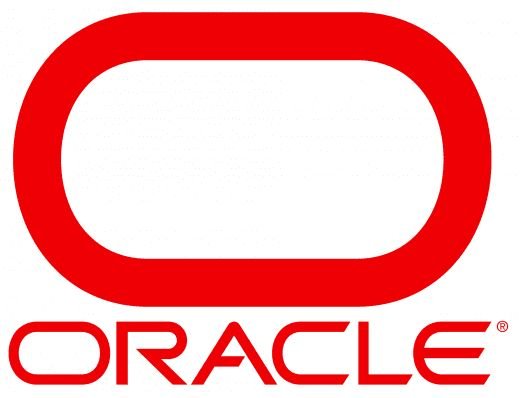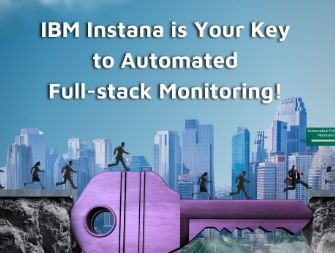In 2025, the technology sector is experiencing significant evolution in Enterprise Asset Management (EAM), driven by innovative advancements in artificial intelligence (AI) and automation. Organizations across various industries are rapidly embracing sophisticated AI-driven solutions to enhance asset performance, operational efficiency, and predictive maintenance capabilities. This shift has been propelled by an increased focus on sustainability, cost efficiency, and asset reliability, which are critical factors influencing enterprise competitiveness.
Advancements in AI-Driven Enterprise Asset Management
The core trend shaping Enterprise Asset Management in 2025 is the accelerated integration of artificial intelligence (AI) and machine learning (ML). AI-driven solutions have significantly improved asset lifecycle management, predictive maintenance, and resource optimization. These intelligent systems predict equipment failures, optimize maintenance schedules, and enhance decision-making, drastically reducing downtime and maintenance costs while maximizing asset utilization and productivity.
Predictive maintenance has emerged as a critical application, using sophisticated AI algorithms to analyze real-time data from sensors embedded in equipment. The AI models can accurately forecast equipment failures days or even weeks in advance, enabling preventive maintenance strategies rather than reactive approaches. This shift dramatically reduces downtime, repair costs, and operational disruptions, leading to substantial efficiency gains.
IBM’s Leadership in Enterprise Asset Management
 IBM remains at the forefront of these developments with its comprehensive Maximo suite, enhanced by advanced AI capabilities. IBM Maximo harnesses predictive analytics and AI-driven insights to transform asset management from a traditional, manual-driven process to a predictive and highly automated operation. IBM’s Maximo incorporates powerful analytics capabilities that allow enterprises to proactively identify and mitigate risks associated with asset failures, thereby optimizing operational performance and asset longevity.
IBM remains at the forefront of these developments with its comprehensive Maximo suite, enhanced by advanced AI capabilities. IBM Maximo harnesses predictive analytics and AI-driven insights to transform asset management from a traditional, manual-driven process to a predictive and highly automated operation. IBM’s Maximo incorporates powerful analytics capabilities that allow enterprises to proactively identify and mitigate risks associated with asset failures, thereby optimizing operational performance and asset longevity.
IBM has integrated cutting-edge techniques such as digital twins, IoT (Internet of Things), and cloud-based analytics within Maximo. The digital twin technology, in particular, has become essential for visualizing asset performance in real-time, testing scenarios virtually, and making informed decisions to optimize asset efficiency and productivity. By leveraging IBM’s robust cloud infrastructure, businesses can easily scale their asset management capabilities and gain actionable insights through advanced analytics tools powered by IBM Watson AI.
Prominent Competitors in the EAM Market
Besides IBM, other key vendors driving innovation in the EAM market include SAP and Oracle, each bringing unique capabilities and competitive advantages to their platforms.
Oracle’s Strategic Innovations
 Oracle has significantly strengthened its position in Enterprise Asset Management through advanced cloud solutions and integrated AI-driven analytics. Oracle’s Fusion Cloud Maintenance delivers predictive analytics, automated scheduling, and mobile accessibility, catering particularly to enterprises seeking agility, scalability, and ease of integration across complex systems. Oracle’s EAM solutions seamlessly blend asset management capabilities with finance and supply chain systems, providing comprehensive, real-time insights that streamline enterprise-wide operations.
Oracle has significantly strengthened its position in Enterprise Asset Management through advanced cloud solutions and integrated AI-driven analytics. Oracle’s Fusion Cloud Maintenance delivers predictive analytics, automated scheduling, and mobile accessibility, catering particularly to enterprises seeking agility, scalability, and ease of integration across complex systems. Oracle’s EAM solutions seamlessly blend asset management capabilities with finance and supply chain systems, providing comprehensive, real-time insights that streamline enterprise-wide operations.
Oracle’s investment in blockchain technology has also enhanced traceability and accountability in asset management. Blockchain integration ensures transparent, secure, and tamper-proof asset records, critical for regulatory compliance and audit readiness in heavily regulated industries such as utilities, healthcare, and transportation.
SAP’s Holistic Asset Intelligence
 SAP continues to leverage its extensive enterprise software ecosystem to offer a holistic and deeply integrated EAM solution. SAP Asset Intelligence Network (AIN) provides enterprises with a robust, cloud-based platform for asset data sharing, predictive analytics, and collaborative asset management across multiple stakeholders and supply chains.
SAP continues to leverage its extensive enterprise software ecosystem to offer a holistic and deeply integrated EAM solution. SAP Asset Intelligence Network (AIN) provides enterprises with a robust, cloud-based platform for asset data sharing, predictive analytics, and collaborative asset management across multiple stakeholders and supply chains.
SAP’s solutions emphasize integrating IoT sensors, AI-driven predictive analytics, and advanced machine learning algorithms directly into operational processes. Its recent enhancements focus on real-time visibility into asset performance, maintenance workflows, and supply chain interactions, thus enabling enterprises to achieve unparalleled levels of operational efficiency and strategic asset utilization.
Sustainability and EAM Integration
A parallel and growing trend within Enterprise Asset Management in 2025 is the explicit integration of sustainability considerations. Enterprises are increasingly focused on extending asset lifecycles, reducing resource consumption, and minimizing environmental impact. AI-powered EAM platforms now commonly include tools for tracking and managing environmental performance metrics, facilitating compliance with increasingly stringent global sustainability standards and regulations.
IBM, Oracle, and SAP are actively enhancing their offerings to include sustainability-focused analytics, enabling businesses to achieve operational efficiency while simultaneously meeting corporate social responsibility and environmental sustainability objectives.
Future Outlook for Enterprise Asset Management
The EAM sector’s trajectory continues toward greater integration, automation, and intelligence-driven management of physical assets. AI and predictive analytics will remain central pillars of future developments, significantly reshaping how organizations approach asset management. Companies embracing these advanced EAM technologies will likely experience enhanced asset reliability, reduced operational risks, and significant cost reductions.
Organizations prioritizing AI-driven EAM strategies today are well-positioned to benefit from increased asset reliability, improved operational efficiencies, and strengthened competitive advantage in a rapidly digitalizing global economy.
In conclusion, Enterprise Asset Management in 2025 is defined by AI-driven solutions, robust predictive analytics, and deep integration with sustainability goals. Leading technology vendors like IBM, Oracle, and SAP continue to innovate, enabling organizations to navigate increasingly complex operational environments effectively and sustainably.
Rene Archambault
Co-Editor – Tech Online News – Canada
Cloud Computing
www.techonlinenews.com
Samantha Cohen
Co-Editor – Tech Online News – Canada
End Computing
www.techonlinenews.com
Post Disclaimer
The information provided in our posts or blogs are for educational and informative purposes only. We do not guarantee the accuracy, completeness or suitability of the information. We do not provide financial or investment advice. Readers should always seek professional advice before making any financial or investment decisions based on the information provided in our content. We will not be held responsible for any losses, damages or consequences that may arise from relying on the information provided in our content.



